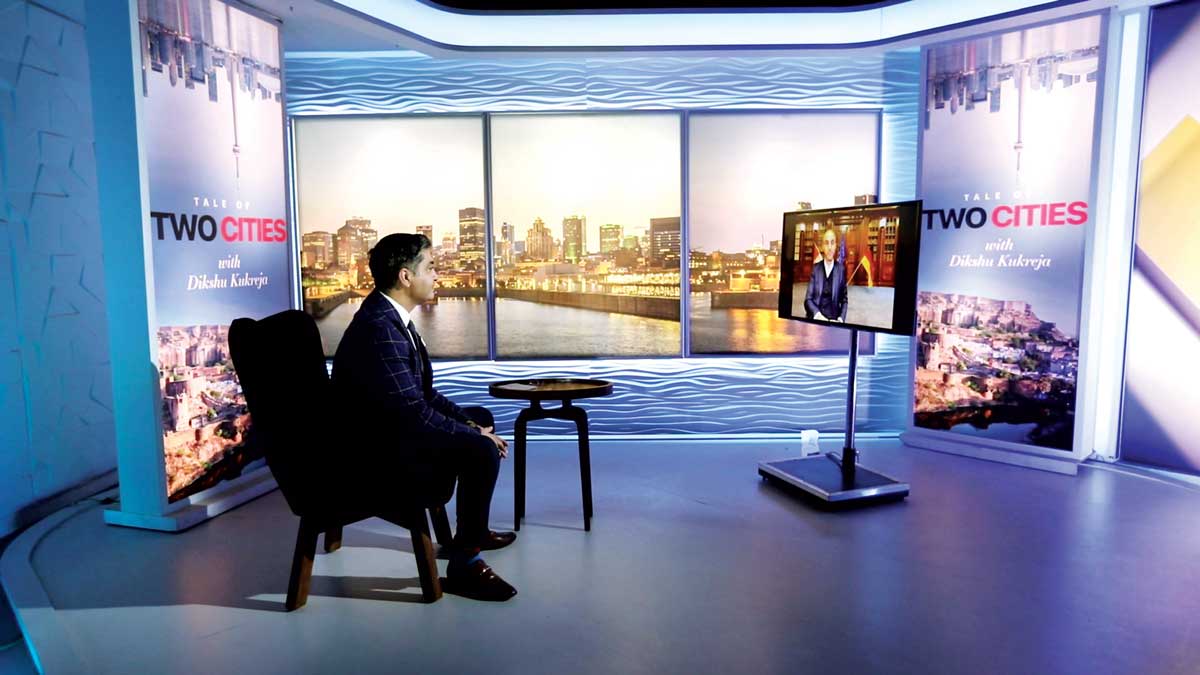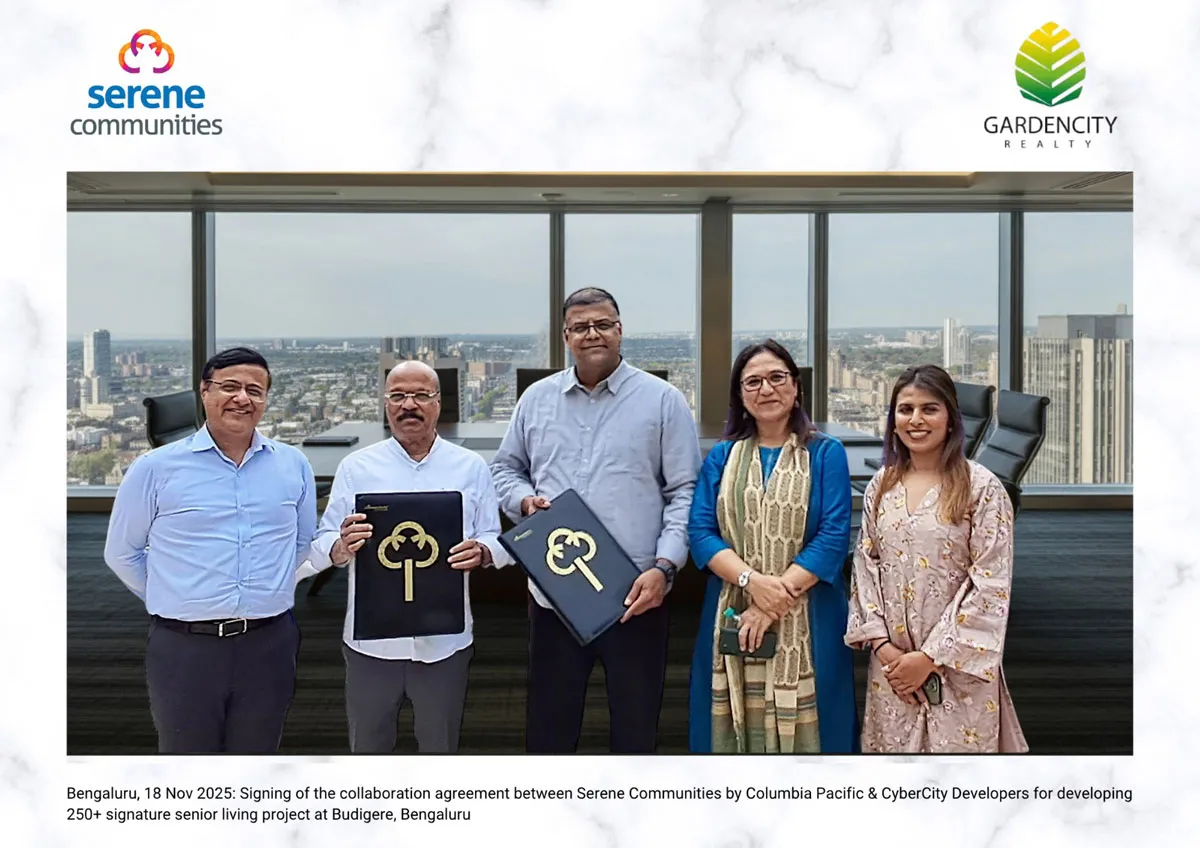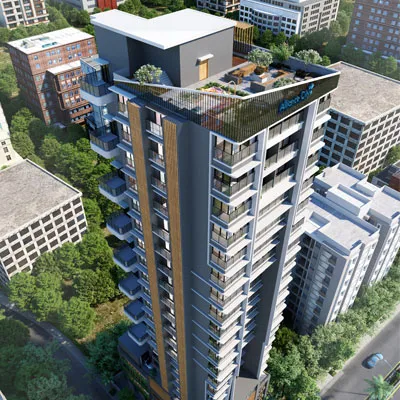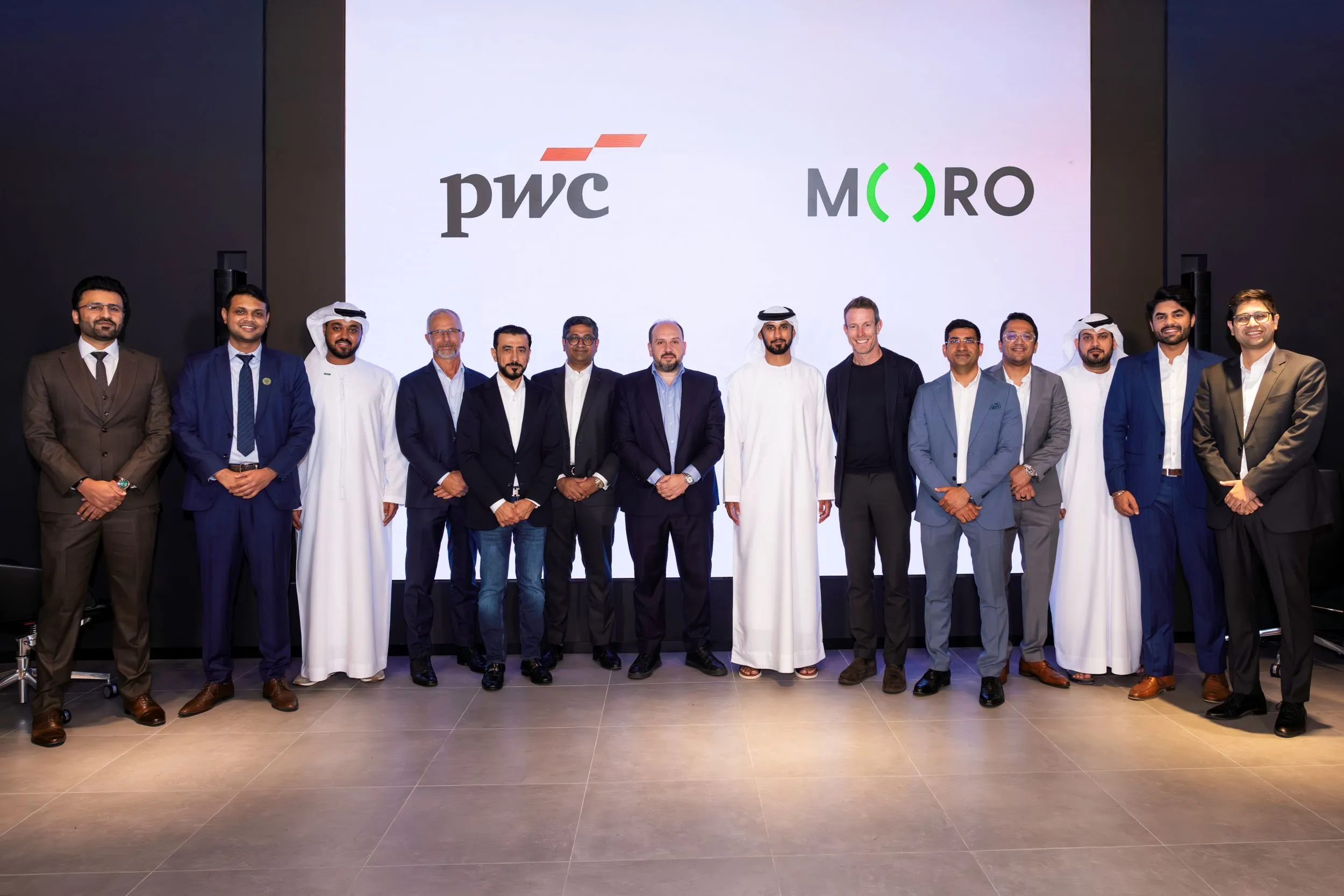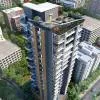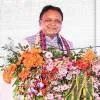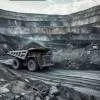HANNOVER & BHOPAL
Dikshu Kukreja (DK): Hannover is the state capital of Lower Saxony and considered one of the greenest in Germany. Similarly, despite being one of the largest urban centres in India, Bhopal is one of the greenest. Unlike many urban centres that have completely consumed the rich natural resources on which they were built, Hannover and Bhopal show us that cities can indeed be commercially and culturally important yet have a synergistic relationship with nature. I am excited to discuss more with the Lord Mayor of Hannover Belit Onay. Hannover, known as the ‘City of Music’, is listed in UNESCO's list of most creative cities. So, in terms of city planning and other public policies, how do these aspects come together?
Lord Mayor Belit Onay (BO): We are a creativity city, we’re a cultural city, the city of music, and that makes us quite special when it comes to planning the transformation of the city. After World War 2 and the huge destruction by bombing, we built a city for cars, for the time in the 1950s and ’60s with a completely different view on the world and economics. Now, we see that construction is causing problems. We are trying to bring the different creativities in our city to create a new city for the people.
DK: Bhopal, in fact, is unique as it has a harmonious balance of both the built and the green. Perhaps its proximity to the world's oldest Buddhist stupa has brought about a fundamental affinity with balance. Hannover, too, sits beautifully amid nature. Tell us more about this approach of balancing the built environment and the pressures of a growing city with nature.
BO: It’s very important to keep this balance. We have one of the biggest forests within a city in Europe. We see a lot of green parks in the district, the historical gardens of Herrenhausen [Herrenhauser Garten]. Then there’s the urban areas like the city centre or the districts where the people live that need more digitalisation and smart concepts. So, we can use, for example in different streets, some assistance with digital solutions to manage resources better, especially water. We are also trying to bring more green in the urban areas; the people support us because they see how important a green city can be, especially in times of climate change.
DK: From being a city made for cars, you are trying to go in the opposite direction. How do you manage that?
BO: There’s a lot of discussion on this. Cars are not just a means of mobility; they are also somehow part of German culture. But when it comes to city planning, everyone sees this is a problem. So, we try to create a car-free city centre and open the streets and other areas, like parking areas, for sports and social or cultural activities. This being the City of Music, we can use these areas to create a new atmosphere in a very urban area. We’re also trying to strengthen public transport. We are focusing on bike lanes. Hannover is a very flat city and ideal for bike lanes.
DK: We certainly need to move away from private vehicles and traditional means of energy….
BO: Due to the war in Ukraine, energy prices are going up. We still have one coal plant in Hannover and we plan to phase out coal by 2026 to move forward to renewable energy. We’re moving toward far-distance heating with renewable energies.
DK: You have handled very interesting portfolios, be it your involvement in shaping social policies, your role in electing the president of Germany in 2022, community service in a hospital right after high school and advocacy for diversity in cities. What can you say about diversity as a strength of a city?
BO: Hannover is a very diverse city with people coming from different countries. We see this as an enormous value for our city and society, and we are trying to bring all together and find a structure. We call it the participation plan in the political system of our city, bring more people into our city parliament with different roots. This is something that strengthens our community and policy on both sides. When we talk about architecture, I was very interested in the state parliament project you realised in Bhopal. What was your challenge in a city with such magnificent cultural heritage?
DK: When we were invited to design the state parliament for Madhya Pradesh, where Bhopal is the capital, it was a very natural outcome of our design process, which is about contextual design. You take these layers of history, culture, society and climate and you overlay them. From there, I think the design has emerged demonstrating India's vibrant democracy. Perched on a hilltop, it beckons the city and citizens to celebrate the idea of democracy. In terms of material selection and sustainable design, it was about bringing in as much natural light, reducing energy loads and embracing nature and the landscape. So that was our approach to the design of what is known as Vallabh Bhawan. Bhopal is also very culturally vibrant with many iconic institutions that celebrate culture and the arts. When you see some of the masjids, palaces and other public architecture there, you see it really shines through.
BO: Bhopal is actually very similar to our city, when it comes to parks, rivers and lakes. I look forward to seeing it!
In conclusion, Dikshu Kukreja says, “We discovered that the arts are a major part of the intangible cultural heritage of both Hannover and Bhopal. Despite being the commercial and creative hubs of their respective countries, their architecture and scale are appropriately balanced. Not only are they both considered among the greenest urban areas of their countries, there are similarities even in their topographies. In the past, Hannover was developed as a city for cars with broad avenues. However, it is setting yet another example by taking cars off the street; instead, public transport and biking are being promoted.
WASHINGTON DC & NEW DELHI
Dikshu Kukreja (DK): Washington DC and New Delhi are both capital cities. As a result, both have a strong presence of government buildings and institutions; a mix of different ethnic and cultural groups; and a wide range of cultural attractions and events. Both are centres of education and research. The British Empire moved the capital from Calcutta to New Delhi in 1911. However, Delhi has been around for a millennium and was a preeminent city long before the Mughals or British set foot here. Meanwhile, Washington DC is a fairly young city with historical traces going back only as far as 1790. However, both cities also share the tenets of urban planning. They have a central civic space, now known as the Central Vista in New Delhi, and the National Mall in Washington DC, both of which form the nucleus of major governmental operations and infrastructure. In fact, the original hexagonal layout of New Delhi, along Raisina Hill, drew inspiration from the National Mall in Washington DC. To discover more, I’m thrilled to have this dialogue with Deputy Mayor of Washington DC John Falcicchio. What can you tell us about the distinctive urban character of your city?
Deputy Mayor John Falcicchio (JF): When people think of Washington DC, they think of the US Capitol, the Washington Monument, the White House. What's unique about our city is that growth is bound by the Height [of Buildings] Act, which says buildings can only rise so tall. That creates a vista that allows people from around the city, and the region, to view some of these iconic buildings.
DK: Many prominent figures from America have found the splendours of India to be the wellspring of their own wisdom and philosophies. For instance, architect Joseph Allen Stein, born in the American Midwest, was drawn to India because of Mahatma Gandhi and Rabindranath Tagore, and spent 45 years of his life in New Delhi. He popularised his unique design vocabulary of regional modern architecture, which celebrated simplicity and dismissed ostentation. He designed some of the most iconic buildings in New Delhi, like the India Habitat Centre, the India International Centre, and many more. There is, in fact, an entire neighbourhood in New Delhi named after him, popularly known as Steinabad. Being a political figure in the national capital and a prominent advocate of urban planning, please tell us how the urban revolution has taken place in Washington DC.
JF: International influence is so important to our culture, design and rich diversity. In fact, Pierre L’Enfant is known as the designer of Washington DC. He was commissioned by the US government to design a capital city and the street grid you see with our wide boulevards and ordered streets is designed by him. In current times, we work with our partners in the federal government to find underutilised land and to put it back to productive use. For instance, the wharf. It is the kind of revitalised neighbourhood any city would want to have.
DK: Another aspect cities must come to grip with is climate change. What are the steps you are taking?
JF: We have two great rivers, the Potomac and Anacostia, that flow through Washington DC. But we've seen a lot of interior flooding because rain has come on quicker than in the past and been more severe. So, the city has embarked on ‘Our Clean Rivers Project’, which creates new tunnels under the city to capture rainwater so that our systems aren't overrun by water and we can actually treat water before it flows back into our rivers. All that sewer water can actually be captured; this is a one-of-a-kind project. Also, we don't have a lot of industry in Washington DC; our economy is more professional service. We put in place the highest standards to make sure our buildings are as energy-efficient as possible. Underneath all the great monuments and architecture, there is a commitment to climate change with how we build and retrofit our buildings.
DK: This is the era of re-evaluating past patterns of growth and retracing a trajectory that adheres to a vision of sustainable habitats of the future. Delhi has proved itself as a city that takes this relearning process quite seriously. The metro system is one of the largest and most efficient in the world. It also has one of the largest networks of zero emission buses. The construction of mega structures is ongoing to better integrate the city; transport-oriented development (TOD) projects commissioned in the city are a fine example. What sort of urban sustainable transformations are taking place in Washington DC?
JF: We have a subway system similar to New York City and also a robust bus system. We want to make sure that as many people as possible can access the transit we've invested so much in. We're right now electrifying our buses. In addition to our metro system, which is a regional system with the District of Columbia, the state of Maryland and the Commonwealth of Virginia, we have a local bus system and we're trying to electrify those buses through renewable energy as much as possible. Transportation is an exciting opportunity for us to fight back on climate change. One thing we're doing in our planning processes is trying to put people closer to job centres.
DK: So, both cities are experimenting with TOD. For India, this will be a breakthrough in the way development will take shape in our cities in the future. Because Delhi is one of the first cities to experiment with TOD; similarly, when you talk about sustainable urban transport, both cities are finding the right solutions.
JF: One thing we talked about earlier is the unique architecture of Washington DC. Tell me about the vista I would see if I walked out of your studio and looked out on the city.
DK: Delhi differs a bit because the pressures of land have been so immense and the value of real estate has gone through the roof over the last few decades. Now, we are seeing a changing skyline. From the low-rise buildings Delhi was typically known for, you're seeing more high-rise buildings and a more vertical skyline emerging. And with the planning principles we talked about, you see high-density, high-rise development taking shape. The city is in transformation. Most important, whichever direction this urban form or architectural character takes, it must maintain the ethos of sustainability.
JF: There’s a lot of pressure on us to build more housing and one way to address that is by adjusting or tinkering with our Height Act. It was passed in 1899 and updated in 1910 but hasn't been changed since. We think there's an opportunity to adjust it so we can have a little more height. Right now, we're capped at 160 ft; a little more could create more housing and transit-oriented development.
DK: We have a lot of impetus on affordable housing because in the past there has been an anomaly where you have housing for the affluent sitting right next to people living in shanties or slums. That is going through a major transformation with the Indian Government’s policies like ‘Housing for All’ and emphasis on the importance of public spaces. In Washington DC, you are working on revitalising cityscapes or streets; we are doing the same in Delhi.
JF: So, we have some of the same challenges and opportunities and we can continue to learn from one another.
In conclusion, Dikshu Kukreja says, this series of conversations has come a long way to substantiate the theory that we are closer than we think. We have learned that Bogota's urban integration models found their reinterpretations in Ahmedabad; Tirana and Panaji adhere to similar codes of honour; Melbourne was discovered by a ship named Calcutta; Rotterdam and Kochi are age-old allies facing a similar climate crisis due to the proximity to the sea; San Marino and Auroville are compact, self-sufficient micro-communities; Mexico City and Mumbai are mega cities that are sinking; Hannover and Bhopal value culture and arts in a similar way; and Washington DC and New Delhi form the microcosms of their respective countries and embody the spirit of democracy. Vasudhaiva Kutumbakam is an old Sanskrit phrase that means ‘the world is one family’. Indeed, no matter what your geographical whereabouts, in a world that is becoming increasingly complex, the need of the hour is to share knowledge and find shared solutions.
